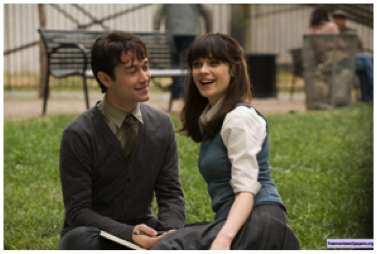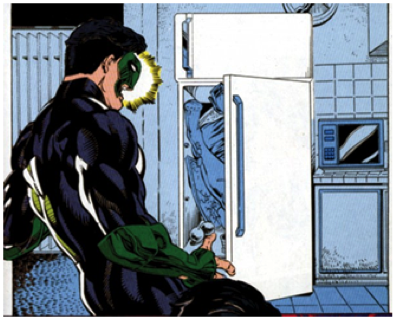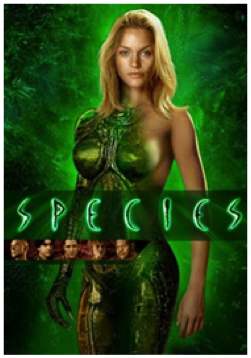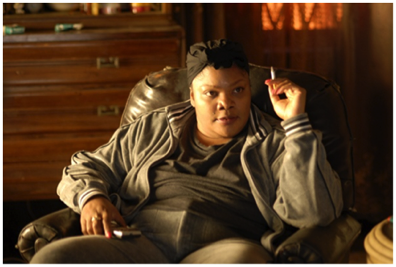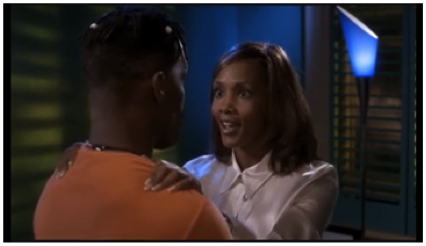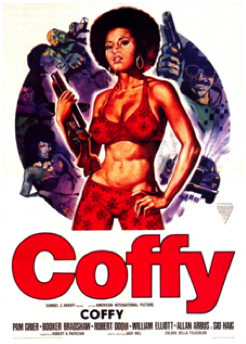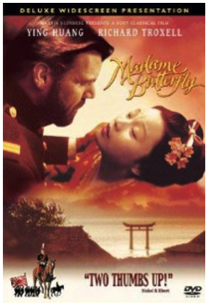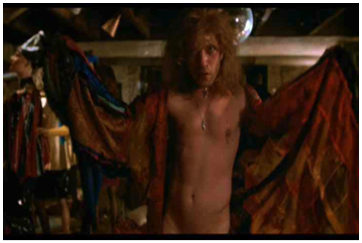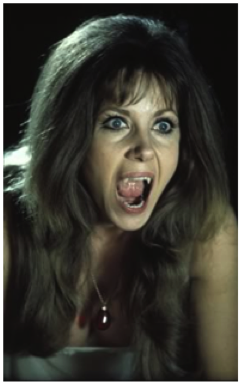Tags
bechdel test, bisexual vampire, china doll, evil demon seductress, flamboyant gay man, jezebel, lesbian vampire, madame butterfly, manic pixie dream girl, media representations, movie tropes, sapphire, slumdog, straw feminist, transsexual killer, tropes, welfare queen, women in refrigerators
An important aspect of activism is to educate yourself and to educate others. This is especially important because the media often portrays people of marginalized status as stereotypes or tropes that label some groups as heroes and others as deviant. I have put together of a variety of problematic and dehumanizing tropes that the media constantly replicates. Next time you are watching television or a movie with your friends, point out the offensive stereotypes you see. By deconstructing these images on a day-to-day basis, we can resist absorbing preconceptions and prejudices formed by the media.
We can combat the media by creating our own representations that resist harmful stereotypes and tropes and offers a more complex portrayal of women, people of color, queer identified people and other marginalized communities. Creating our own media and art is a powerful form of activism. Make your own movies, books, comics and television shows that resist these stereotypes.
Hollywood often marginalizes women to a love interest of the white, heterosexual male protagonist. They are often reduced to two-dimensional characters in order to flesh out the supposedly more important male character. In the comic book Dykes to Watch Out For, Alison Bechdel came up with a rule that points out the relative absence of fleshed out female characters in film in comparison with men. This test is called the “Bechdel Test”. The rule is that the film has to have two female characters that are named that talk to each other about something other than men in order to be watchable. Surprisingly, Hollywood film often cannot even meet these requirements. This rule does not prove a film to be feminist or not, but rather shows the bare minimum for a film to be considered inclusive of women.
Women of color and queer identified people are often reduced to additional problematic tropes that perpetuate harmful stereotypes that are pathologizing, objectifying, and demonizing. The media portrays women of color and queers far less than their white, heterosexual counterparts. Because of their lack of transparency and the fact that directors and producers tend to be white heterosexual men, their character often depends far more on exaggerated stereotypes rather than realistic representations. They are often presented as tokens to the larger white, heterosexual cast in order to add “diversity,” and they are often used to drive the narrative forward of the more “important” white, heterosexual characters.
The Manic Pixie Dream Girl
The Manic Pixie Dream Girl serves as inspiration for the gloomy, depressed artist male protagonist in order to show him how magical and exciting life can be. She is generally represented as childish, bubbly and shallow, and she has no life of her own in the film beyond acting as the muse of the protagonist so that he go back to whatever great and important things that his current existential crisis interrupted. This trope is problematic because it presents women as existing primarily for the interests of men, and it does not acknowledge women’s own capabilities as artists, creators, and inventors. Examples include Zooey Deschanel in (500) Days of Summer, Natalie Portman in Garden State, Kristen Dunst in Elizabethtown, and Kate Winslet in Eternal Sunshine on the Spotless Mind (Sarkeesian).
Figure 1: Manic Pixie Dream Girl Clementine (Kate Winslet) in Eternal Sunshine on the Spotless Mind
Figure 2: Manic Pixie Dream Girl Summer (Zooey Deshanel) in (500) Days of Summer
Women in Refrigerators
Comic-book writer Gail Simone coined the term Women in Refrigerators to describe superheroines who are depowered, raped, or cut up and stuck in the refrigerator in order to serve as a plot point for a male hero to seek revenge. The trope presents women as expendable characters that exist to improve the storyline of the more “important” male characters. In addition, many of the scenes of these women being tortured are highly sexualized. Unlike the deaths of male superheros who die putting up a fight, women are presented as powerless, victims. The quintessential example occurs in the comic book The Green Lantern where the Green Lantern comes home to his girlfriend cut up and stuck in the fridge (Sarkeesian).
Figure 3: The Green Lantern’s Girlfriend cut up in a refrigerator
The Straw Feminist
The Straw Feminist is a character that names herself as a feminist whose feminism is ultimately proven to be ridiculous, over-the-top and unnecessary. The trope offers distorted and a reductive vision of feminism that offers little resemblance to actual feminist movements. The Straw Feminist is often portrayed in contrast to other strong, female characters in order to differentiate these characters from feminists. This trope encourages people to distance themselves from feminist movements even though the representation is based off of misrepresentations, oversimplifications and stereotypes (Sarkeesian).
Figure 4: Straw Feminist Femme Fatale in Powerpuff Girls. Femme Fatale is an example of a straw feminist because of her over-the-top views on feminism. The episode subverts the trope by undermining her extreme views on feminism in favor of more positive forms of feminism that the Powerpuff Girls engage in.
Evil Demon Seductress
The Evil Demon Seductress is a supernatural creature disguised as a sexy female character that uses her sexuality to manipulate, seduce and kill men. Whether she is a demon, alien, robot or vampire, this trope presents women’s sexuality as primarily being used to manipulate men. This trope allows male viewers simultaneously objectify women and reaffirm the stereotype that women are manipulative (Sarkeesian).
Figure 5: Evil Demon Seductress Jennifer (Megan Fox) in Jennifer’s Body
Figure 6: Evil Demon Seductress Sil (Natasha Henstridge) in Species
The Welfare Queen
The Welfare Queen is a single mother who depends on welfare in order to raise her children. She is often associated with the black community. Film and other media outlets often portray this character as abusing the welfare system because of their laziness and irresponsibility as mothers and workers. This trope promotes the idea that welfare is given too liberally when in actuality, many single mothers depend on this assistance to survive and raise their family (Dione).
Figure 7: Welfare Queen Mary (Mo’Nique) in Precious
The Jezebel
The Jezebel is an anti-black racist stereotype/minstrel archetype in which a black woman is portrayed as hypersexual and possessing an insatiable sex drive. She sacrifices love for sexual gratification, and she is often punished for her sexual liberation and often presented as immoral and therefore not worth loving. This trope is especially problematic because black women have historically been hypersexualized. For example, overseers and plantation owners depicted slaves as Jezebels and therefore incapable of being raped. They used this justification in court when they were convicted of rape (Dione).
Figure 8: Jezebel Lysterine (Vivica A. Fox) in Booty Call
The Sapphire
The Sapphire is an anti-black racist/ sexist stereotype and comes from black face minstrelsy. She is portrayed as an independent black woman who is rude, loud, malicious, stubborn and overbearing (Pilgrim). Her emasculating sharp tongue generates cheap laughs for the audience, and she is criticized for her cruelty and lack of emotion (Dione). This trope allows little exploration of the social factors that shape living as a woman of color, and it punishes women for not being passive and for asserting themselves.
Figure 9: Sapphire Coffy (Pam Grier) in Coffy
Figure 10: Sapphire Kenya (Sanaa Lathan) in Something New
Madame Butterfly/China Doll
The Madame Butterfly is the “submissive-Eastern-feminity-waiting-forlornly-for-her-Western-lover-to-return” (DasGupta). She is shy, passive and ultra-feminine and always willing to serve the interests of her man (DasGupta).
Figure 11: Madame Butterfly
Figure 12: The Madame Butterfly in the novel The Secrets of Jin-S’hei
The Slumdog
The Slumdog is a trope commonly associated with Asian people that fulfills popular fascination with “poverty pornography” where poor people are portrayed as having no agency and objects to be pitied rather than fleshed out human beings.
Figure 13: Slumdogs in Slumdog Millionaire
The Transsexual Killer
The media rarely offers portrayals of transgender people, and when they do, it is often extremely pathologizing. For example, there are prolific examples of transgender people being represented as Transsexual Killers. For example, in the film Silence of the Lambs, Buffalo Bill kills women in order to make a suit out of their skin because he was repeatedly denied a sex change by gender clinics. Since film rarely portrays transgender people, portraying them as unstable and dangerous reiterates existing stereotypes that transgender people are mentally ill.
Figure 14: Transsexual Killer “Buffalo Bill” (Ted Levine) Silence of the Lambs
The Flamboyant Gay Man
Gay men are often not given many parts in movies and television, but when they do they are often portrayed as flamboyantly gay. The Flamboyant Gay Man is effeminate in his dress, mannerisms, speech, and interests. This monolithic portrayal reduces the diversity of the gay male community to one common trope that media representations depend on when they want to feature a gay male.
Figure 15: Flamboyant Gay Man Bruno (Sacha Baron Cohen) in Bruno
The Lesbian/Bisexual Vampire
The Lesbian Vampire steals women from their male lovers by manipulating them. They are often hypersexualized and appear heterosexual and feminine because they exist in order to pleasure a male audience. If they are bisexual, they mostly bite other females. Because they threaten the male protagonist’s power and because her sexuality is so dangerous and excessive, they are often destroyed at the end. This trope presents lesbian/bisexual vampire sexuality for the consumption of the heterosexual male spectator. In addition, it presents lesbian/bisexual sexuality as excessive and predatory.
Figure 16: Lesbian Vampire Marcilla (Ingrid Pitt) in The Vampire Lovers
For more examples of problematic tropes in the media, visit the following websites:
- http://www.feministfrequency.com/
- http://bitchmagazine.org/post/six-annoying-women-character-tropes-in-black-romantic-comedies
- http://www.racialicious.com/2012/04/11/butterflies-slumdogs-and-tiger-moms-asian-american-women-and-the-rescue-narrative/
- http://www4.ncsu.edu/~mseth2/com417s12/readings/HillCollinsImages.PDF


